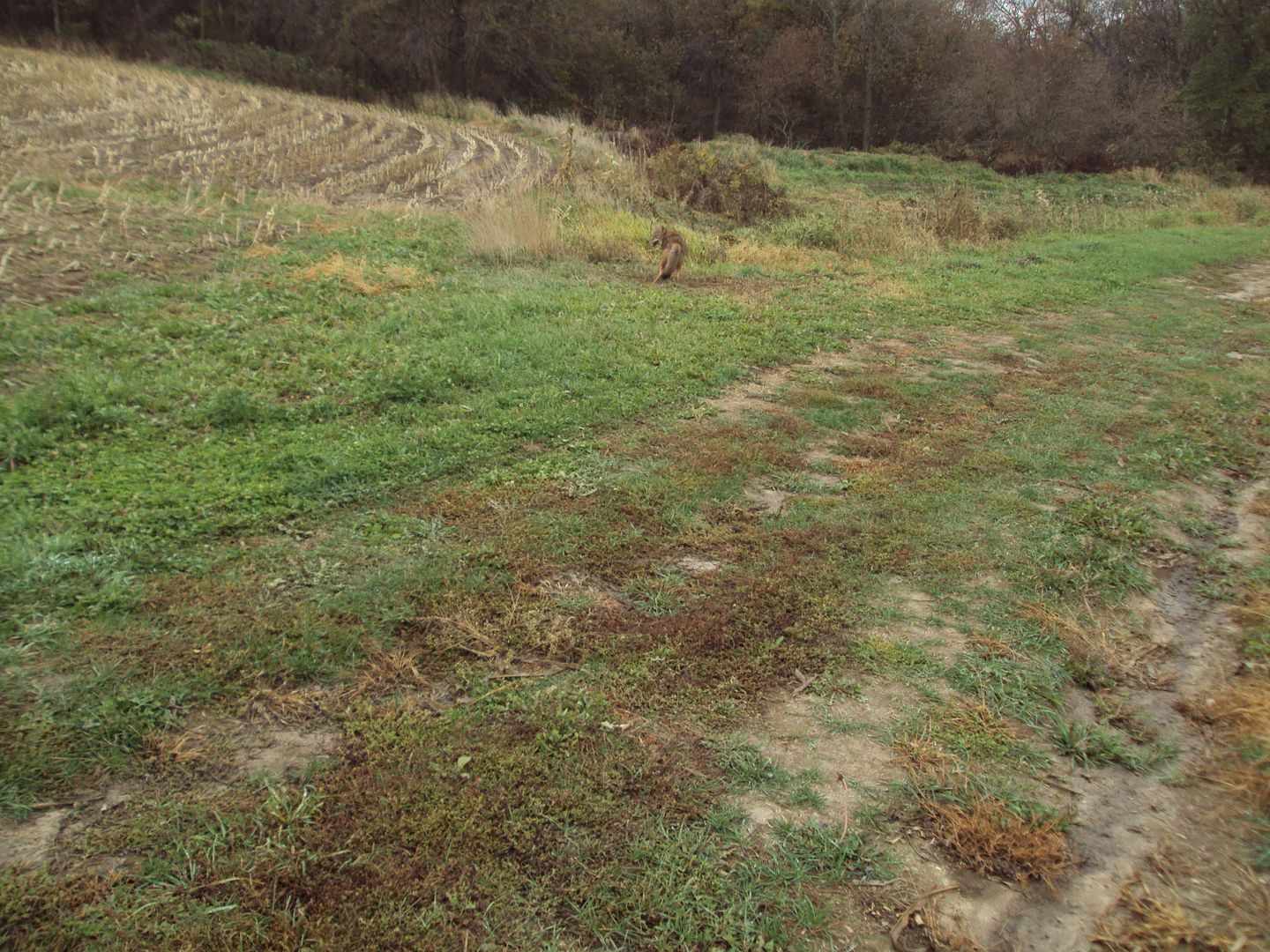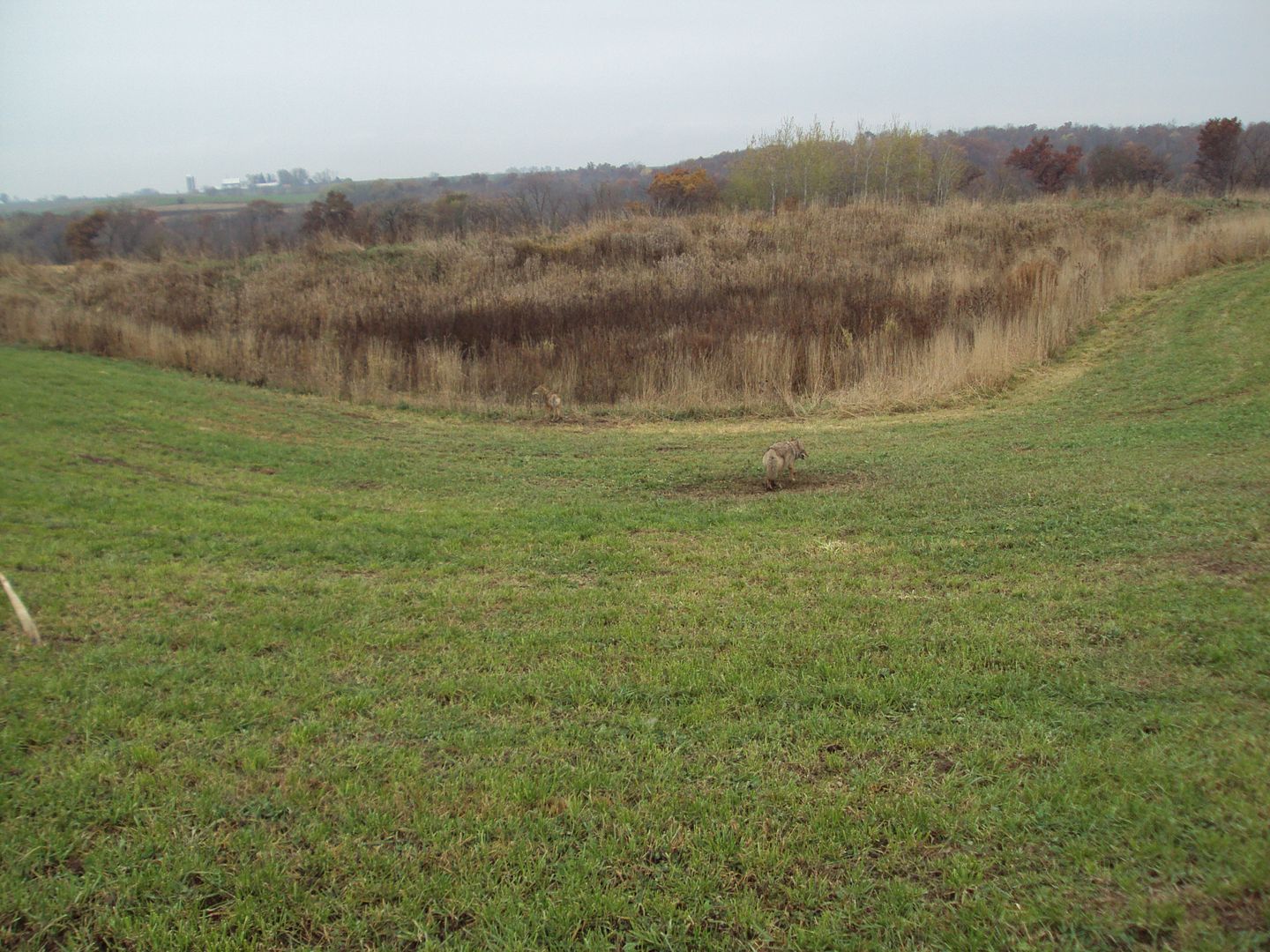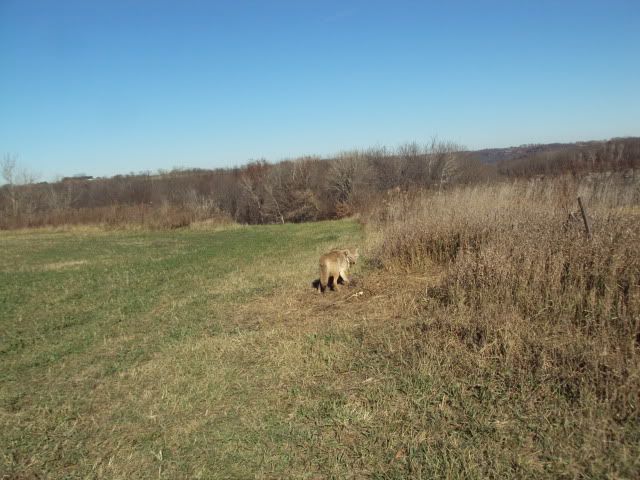|
|
Post by bogio on Feb 23, 2014 17:34:24 GMT -6
 click it  click it  click it Three short videos of a location I tried for the first time this past season. I'm interested in thoughts as to how to set it up or if you would set it up. |
|
|
|
Post by trappnman on Feb 24, 2014 8:27:36 GMT -6
To me the pond seems like the obvious location- if I'm understanding correctly, its downwind from the buildings?
Hog farm I'm guessing, although it could be turkey as well- I've not found that type of confinement to be much of an attraction, because here no pigs are tossed, all get hauled away by the rendering truck so all you are having is the smell and not much else. Certainly no come to type attraction.
Having set that, I do set up such locations, and it seems they are all corn, with just the waterways and the only thing that binds them together is the pond-
the little corn corner by the woods would be my secondary location
|
|
|
|
Post by bogio on Feb 24, 2014 20:56:29 GMT -6
Pond is west of the building.
It is hogs and is the only "big stink" in the immediate area. Dead hogs are from time to time left out behind the building until they have time to deal with them. Owners tell me the coyotes drag them around, generally ending up down over the lip of the ditch out of sight. While I was set up there, there was a 200 pounder that lay out there and got plenty "seasoned" but was not fed upon. Where they eventually take them is yet to be determined.
Where would you set around the pond and why there over the corner by the woods, or would you set both at the same time?
|
|
|
|
Post by trappnman on Feb 25, 2014 7:06:15 GMT -6
those seem like the only 2 spots that have the potential to lay up.
|
|
|
|
Post by renny1 on Feb 25, 2014 8:24:47 GMT -6
So if you jump sleeping coyotes in the middle of the day...is that a lay-up spot?
|
|
|
|
Post by trappnman on Feb 25, 2014 8:42:56 GMT -6
as a generality, my opinion is no. You surprised a snoozing coyote, or a hunting coyote- chances are you return to that singular spot countless times w/o doing the same.
attractions in my area, are worked very rarely during the day by coyotes- simply too much traffic but if you were in an area where coyotes were working attractions thoughout the day, then that jumped coyote could be in the "true" lay up spot. but in which case they wouldn't be sleeping-
to me, in my use of it vis a vis locations- the lay up or stall out (not sure what the research term for it is but doesn't matter) is related to the attraction, but that's only because the goal is multiple groups- you certainly have places where the local group lays up that aren't attraction related per se-
that's where sign of regular use and multiple types of sign tells you it is where time is spent- and time spent is the silver bullet perhaps.
|
|
|
|
Post by bogio on Feb 25, 2014 14:12:02 GMT -6
This is not a multiple group use spot but i feel it is going to be attractive to the "locals". Tman, you seem to agree that you would set it up also on this criteria. To me the pond is the obvious location. Where would you locate sets around/by it? High/low/out from/tight to. Here is a vid of the immediate area were the ditch hits cover. Is that the corner you refer to and with a close view does it offer more than the pond does. Would you set both or one or the other?  click it I tried some new things location wise this past season and while they worked, they weren't what I was looking for. That said, I suspect some population issues in many areas may have given a skewed view of my results. I'm looking for some realistic evaluation here. |
|
|
|
Post by trappnman on Feb 26, 2014 12:59:15 GMT -6
on the pond, I'd set up where the taller grass on left, comes into the waterway
I only have a few such places like your ditch, but have a lot of smaller, similar type things like weed fingers in bean fields although not true barriers
I've found its better on a barrier to set up both sides, and closer to the end point. I've found anywhere up and down the length, is unproductive. I'd set up in your case, on the outside edge of the green grass, close to the "rounded" part on both sides, and a good spot to toss in a few carcasses in the wood edge
I do believe that for me, a marginal spot can be come better by adding a visual like a cow skull or hip bone 30-40 feet from the sets
|
|
|
|
Post by bogio on Feb 26, 2014 21:12:24 GMT -6
Here are some vids showing where I set.  click it First coyote to show up. Male.  click it Second coyote to show up. Another male.  click it An interesting detail on the second male. Also note the "montgomery thumb".  click it Third coyote. Female. Note the mange. I also placed two sets below by the confinement where the ditch buffer strip meets the squared out area. Those sets had no action whatsoever. I did not set back at the ditch/woods corner as I felt everything would end up where I already was set. The sets by the pond hit bang, bang, bang then went dead. I checked back a couple of times after we had snow on and saw no signs of visitation or travel. Another location was set on the far SE corner by a small wetland. That is where several mange/lice coyotes were taken that I showed previously. Some other areas I trapped showed animals afflicted with mange but not nearly on the scale this area did. My hope is that the extended period of snow and very low temperatures that we have experienced this year will purge what animals that remained with it. |
|
|
|
Post by trappnman on Feb 27, 2014 7:54:36 GMT -6
on 1st video- why did you set away from the tall grass?
|
|
|
|
Post by bogio on Feb 27, 2014 21:27:46 GMT -6
Habit.
Have always set out away from cover. Mixed it up this year and did both. Will set more against cover in the future. Brought in high backstops for these sets.
Are you talking about below the damn for your choice? You've shown other setups below dams. If so, why low as opposed to high. I went high as that is where I found sign, mostly droppings.
|
|
|
|
Post by trappnman on Feb 28, 2014 11:37:43 GMT -6
More often than not, any success I have is above the dam/pond, if its a "flat land" type pond..
very seldom do I do any good setting on the dam.
heres a small pond situation

here is a small holding pond, with a double set at the edge, and up a bit on the edge- a bone was about where I'm taking pic

heres a pond where I'm sitting next to the dam- that fencepost is the crossover- most are weedy like this

|
|
|
|
Post by bogio on Mar 3, 2014 20:30:46 GMT -6
 click it A pond for you. |
|
|
|
Post by trappnman on Mar 6, 2014 8:20:25 GMT -6
just looking at the opening still pic- what did you see where the ditch and fields met down towards the woods?
|
|
|
|
Post by bogio on Mar 6, 2014 19:51:34 GMT -6
Tman
What do you want to see?
I've got video of all of it.
Since no one wants to participate, I would rather take it to P.M.
Let me know and I'll send it to you.
|
|
|
|
Post by Steve Gappa on Mar 7, 2014 8:02:43 GMT -6
yes do that
scan down from where you are now in video, to where the ditch bends
|
|
|
|
Post by RdFx on Mar 7, 2014 11:27:27 GMT -6
The thought process of keeping away from tall grass, i discarded long time ago. Reason? I set up large round bales as i saw tracks where yotes and fox were mousing the area around and under the bales.... i set the bales up, especially if a lone or one away from other bales. The yotes and fox will work all bales if really hungry but using ones near a edge line work very well. First time, double on yotes, one on each side of large round bale....good thing i set far enough away so yotes didnt trash bale. After that i set right at or in edge of tall grass. Stop and figure..... that tall grass is the preditors lunch box!!
|
|
|
|
Post by trappnman on Mar 7, 2014 13:18:59 GMT -6
I look at it as to where his attention is going to be focused, and that's on the grass edges around that ditch. The food study here on coyotes showed tat voles were the food found most in the coyotes diet- and thats where voles live.
I like to put the set into the grass by at least a 3rd- really makes the set directional.
I've got one location the past 3 years, that is the tail end of a large bale yard next to penned feeder cows- the old bales have lots of grass around them, and there is room between bales in many cases, and its been good for 2 doubles every year plus a few singletons in a week.
|
|